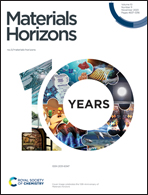Biomimetic cell culture for cell adhesive propagation for tissue engineering strategies
Abstract
Biomimetic cell culture, which involves creating a biomimetic microenvironment for cells in vitro by engineering approaches, has aroused increasing interest given that it maintains the normal cellular phenotype, genotype and functions displayed in vivo. Therefore, it can provide a more precise platform for disease modelling, drug development and regenerative medicine than the conventional plate cell culture. In this review, initially, we discuss the principle of biomimetic cell culture in terms of the spatial microenvironment, chemical microenvironment, and physical microenvironment. Then, the main strategies of biomimetic cell culture and their state-of-the-art progress are summarized. To create a biomimetic microenvironment for cells, a variety of strategies has been developed, ranging from conventional scaffold strategies, such as macroscopic scaffolds, microcarriers, and microgels, to emerging scaffold-free strategies, such as spheroids, organoids, and assembloids, to simulate the native cellular microenvironment. Recently, 3D bioprinting and microfluidic chip technology have been applied as integrative platforms to obtain more complex biomimetic structures. Finally, the challenges in this area are discussed and future directions are discussed to shed some light on the community.

- This article is part of the themed collection: Recent Review Articles


 Please wait while we load your content...
Please wait while we load your content...